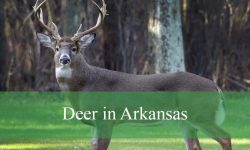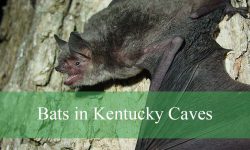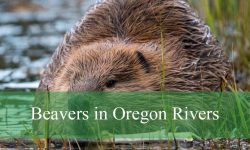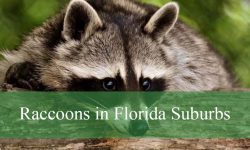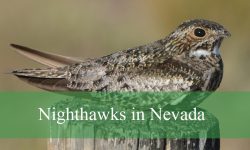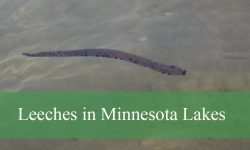Raccoons are clever, adaptable mammals that have managed to expand their range far beyond their original habitats. While not native to Nevada, raccoons have become established in many parts of the state, particularly near rivers, irrigation ditches, agricultural zones, and even suburban areas. Their ability to thrive in both natural and urban landscapes makes them one of the most recognizable wildlife species across North America.
In Nevada, there are not multiple species of raccoons, but rather subspecies of the Common Raccoon (Procyon lotor) that occur depending on the region. These include the widespread Common Raccoon, the Northwestern Raccoon, and the California Raccoon. Each type has unique characteristics, behaviors, and preferred habitats that allow them to survive in Nevada’s diverse landscapes.
Below, we’ll look at the 3 types of raccoons in Nevada with pictures and identification tips.
Common Raccoon (Procyon lotor)
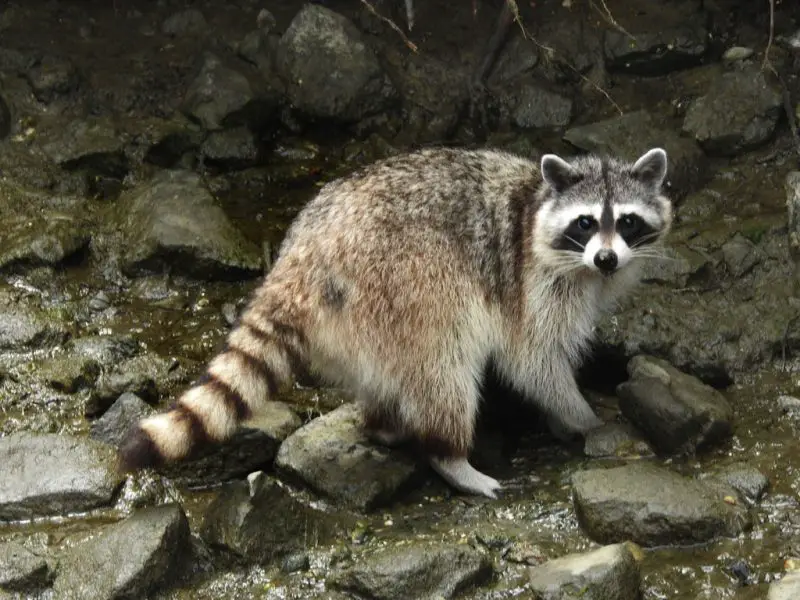
Characteristics and Identification
The Common Raccoon is by far the most widespread and easily recognized raccoon found in Nevada. Adults typically weigh between 10 and 20 pounds, though some particularly well-fed individuals can grow larger in urban environments where food is abundant. They have a stocky body covered in coarse grayish-brown fur, which sometimes shows hints of black or reddish tones depending on the season and region. Their most distinctive features are the black “bandit mask” across the eyes and the bushy tail marked with 5 to 7 alternating dark rings, both of which make them unmistakable.
Raccoons are built for adaptability. Their sharp claws and extremely dexterous front paws function almost like human hands, allowing them to grasp, twist, pry, and even unlatch doors or containers. This unusual manual ability sets them apart from many other mammals in Nevada. Their strong hind legs and semi-retractable claws also make them excellent climbers, capable of scaling trees, fences, or even buildings with ease.
These animals are primarily nocturnal, which means they are most active at night. Their keen sense of smell and excellent night vision help them locate food in near-total darkness. As opportunistic omnivores, Common Raccoons have one of the most varied diets of any mammal. They will consume fruits, nuts, acorns, insects, amphibians, fish, bird eggs, and small rodents. In urban areas, they are notorious for scavenging through garbage cans, raiding compost piles, and stealing pet food left outdoors. This dietary flexibility is one of the main reasons why they thrive in both wilderness and city settings across Nevada.
Habitat and Behavior in Nevada
In Nevada, Common Raccoons are strongly associated with water-rich environments such as streams, rivers, ponds, and irrigation canals. The state’s dry desert climate makes water an essential factor for their survival, so they often remain close to riparian zones or human settlements where water is available. Agricultural lands, orchards, and suburban neighborhoods also provide excellent foraging opportunities, particularly when crops, livestock feed, or trash bins are accessible.
Raccoons are incredibly adaptable in their choice of shelter. They may den inside hollow trees, rock crevices, and brush piles, but they are just as likely to take up residence in barns, sheds, culverts, and even abandoned buildings. In residential areas, attics, chimneys, and crawl spaces can sometimes become raccoon dens if access is available.
Socially, Common Raccoons are usually solitary animals, especially males, who tend to roam larger territories. Females, however, often remain in smaller ranges, particularly when raising their young. During the breeding season in late winter, males travel widely in search of mates, while females give birth to litters of 2–5 kits in spring. These kits remain with their mother through the summer, learning essential foraging and survival skills before dispersing in the fall or early winter.
Their behavior in Nevada highlights their resourcefulness and intelligence. They can memorize food sources, solve simple puzzles, and are known to wash or “rinse” their food in water—a behavior often observed near rivers or backyard ponds. This combination of intelligence and adaptability ensures that the Common Raccoon continues to thrive in Nevada, despite being a non-native species.
Northwestern Raccoon (Procyon lotor pacificus)
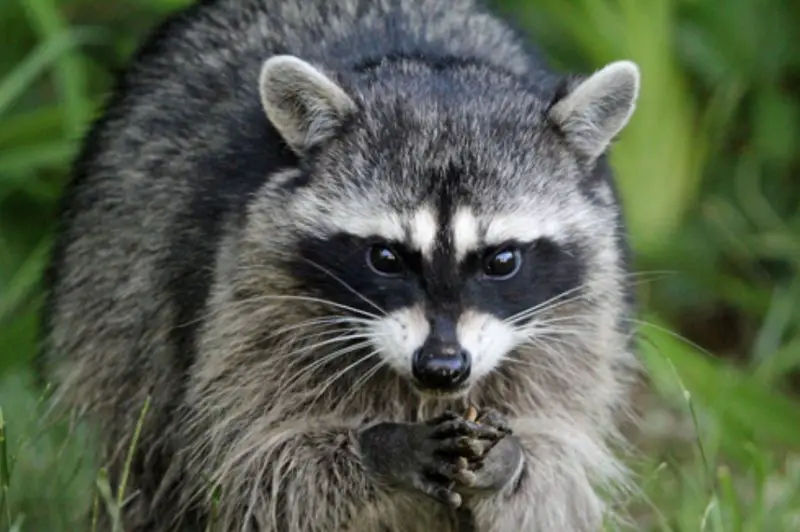
Characteristics and Identification
The Northwestern Raccoon is a subspecies more commonly associated with the Pacific Northwest, but its distribution extends into parts of northern Nevada, especially areas with dense vegetation and permanent water sources. This raccoon is noticeably larger and bulkier than its southern counterparts, with adults often weighing 15–25 pounds, and in some cases exceeding that range when food is plentiful.
Its fur is one of its defining features—thicker, longer, and darker than most other raccoon subspecies. This heavy coat helps the Northwestern Raccoon withstand the cooler, wetter conditions of its native habitat, though in Nevada it also provides insulation during chilly mountain nights. The signature black eye mask and ringed bushy tail are present, but the overall coloration leans more toward deep gray or blackish-brown, giving it a more rugged appearance compared to the lighter California Raccoon.
Behaviorally, the Northwestern Raccoon shows the same hallmark traits of intelligence and adaptability seen across all raccoons. They are highly skilled climbers, swimmers, and foragers, capable of navigating both rugged natural landscapes and areas influenced by humans. Their large size and strong build make them particularly adept at hunting small animals and overturning rocks or logs in search of prey.
Habitat and Behavior in Nevada
In Nevada, the Northwestern Raccoon is most often found in northern regions of the state, where cooler temperatures, mountain foothills, and riparian zones provide more favorable conditions than the open desert. They thrive in wooded areas, river valleys, and habitats with heavy vegetation that offer cover and a steady food supply. Unlike their urban-dwelling cousins, these raccoons show a stronger preference for natural environments, though they will occasionally wander into rural properties in search of livestock feed or crops.
Their diet in Nevada reflects their proximity to water-rich habitats. They commonly feed on amphibians, crayfish, aquatic insects, frogs, and fish, along with fruits, berries, nuts, and small mammals. This reliance on aquatic prey sets them apart from raccoons in southern Nevada, which depend more heavily on agricultural crops or human waste. Their foraging often involves dipping their nimble paws into streams or turning over stones to uncover hidden prey.
When it comes to shelter, Northwestern Raccoons den in hollow logs, tree cavities, rocky crevices, and burrows, though they may also take advantage of barns, sheds, or culverts near rural communities. They are typically solitary, with males covering larger ranges that overlap with several females. Breeding occurs in late winter, and litters of kits are usually born in spring, raised in secure dens near reliable food and water.
Overall, the Northwestern Raccoon represents the hardier, wilderness-adapted branch of the raccoon family found in Nevada. Its larger size, darker coat, and reliance on natural food sources distinguish it from the lighter, more urban-adapted California subspecies to the south.
California Raccoon (Procyon lotor psora)
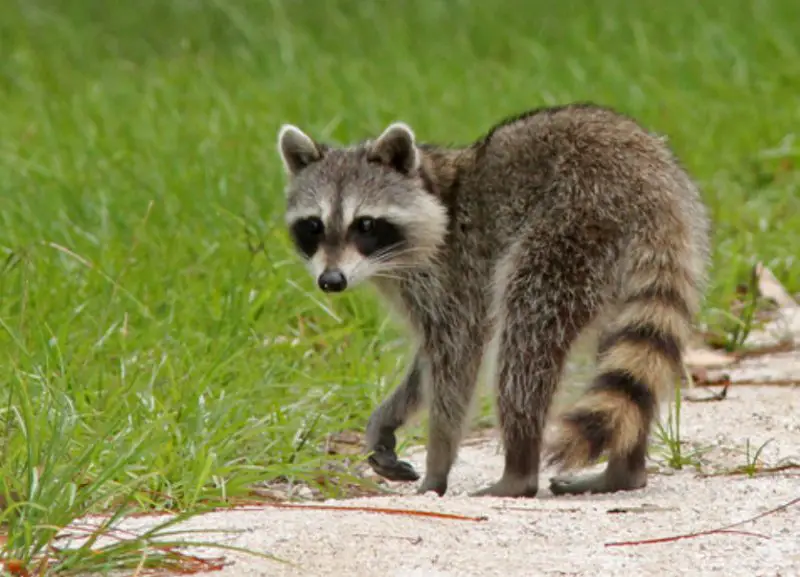
Characteristics and Identification
The California Raccoon is the subspecies most common along the western United States and spills into southern and western Nevada. It is noticeably smaller and lighter than its northern relatives, with adults typically weighing 8–15 pounds, though some larger individuals can occur where food is abundant. Its coat is often lighter in color, sometimes showing a reddish-brown or sandy tint, which blends well with the drier landscapes it inhabits. Compared to the darker, bulkier Northwestern Raccoon, this subspecies appears sleeker and more agile.
Despite these size and color differences, the California Raccoon maintains the classic raccoon features—a masked face, ringed tail, rounded ears, and nimble paws. Its front paws are highly dexterous, enabling it to manipulate small objects, pry open containers, and dig for food. These paws also make it an excellent forager in both natural and human-modified environments.
Intelligence is another key trait. Like all raccoons, the California subspecies demonstrates advanced problem-solving abilities. Studies have shown raccoons can remember solutions to puzzles for years, which explains why they often return to bird feeders, trash bins, or orchards once they’ve discovered a reliable food source.
Habitat and Behavior in Nevada
Unlike the cold-adapted Northwestern Raccoon, the California Raccoon is well-suited to warmer, semi-arid environments. In Nevada, they are most often observed in southern and western regions, particularly near irrigation canals, orchards, vineyards, agricultural fields, and suburban neighborhoods. These areas provide both food and water—critical resources in Nevada’s desert climate.
Their diet is extremely diverse, allowing them to thrive in human-dominated landscapes. They feed on fruits, nuts, insects, rodents, amphibians, and even fish or frogs when water sources are nearby. In farming areas, they may raid cornfields, grapevines, or orchards, leading to occasional conflict with growers. In towns and cities, they scavenge pet food, compost, and garbage, making them one of the most commonly encountered raccoons by residents.
Shelter is also highly adaptable. California Raccoons den in tree hollows, burrows, culverts, barns, and abandoned buildings, and in suburban areas, they may occupy attics or crawl spaces. Unlike some wildlife species that avoid human activity, this subspecies often thrives in close proximity to people, using urban resources to its advantage.
Socially, they follow the typical raccoon pattern: mostly solitary, except for mothers raising litters of 2–5 kits in spring and summer. Because southern Nevada winters are milder, these raccoons remain active year-round, foraging during the night and resting in dens during the day.
In summary, the California Raccoon represents the urban survivor among Nevada’s raccoon types. Smaller, lighter, and more tolerant of arid habitats, it excels in agricultural and suburban landscapes, where it skillfully adapts to life alongside humans.
Comparison of Raccoon Types in Nevada
Type of Raccoon |
Size |
Habitat in Nevada |
Key Identification |
|
|---|---|---|---|---|
Common Raccoon |
10–20 lbs |
Gray-brown with black mask |
Statewide, near water and urban areas |
Classic raccoon look with ringed tail |
Northwestern Raccoon |
15–20+ lbs |
Darker, thicker coat |
Northern Nevada, riparian and wooded zones |
Larger, cold-adapted subspecies |
California Raccoon |
8–15 lbs |
Lighter, reddish-brown fur |
Western and southern Nevada, desert-edge areas |
Slightly smaller with lighter coat |
FAQs About Raccoons in Nevada
Are raccoons native to Nevada?
No, raccoons are not originally native to Nevada. They expanded into the state due to their adaptability and human activity, particularly through agricultural development and urban expansion.
Where are raccoons most commonly found in Nevada?
Raccoons are most often found near water sources such as rivers, streams, and irrigation systems. In urban areas, they are commonly seen in backyards, trash bins, and agricultural zones.
Do raccoons in Nevada pose a risk to humans or pets?
While raccoons are not usually aggressive, they can carry diseases such as rabies and parasites like roundworm. Pet owners should avoid leaving food outside to discourage raccoons from visiting.
What do raccoons eat in Nevada?
Their diet is highly varied and includes fruits, nuts, insects, fish, frogs, rodents, and human-provided foods such as garbage or pet food.
How can you tell the difference between the raccoon types in Nevada?
The differences are subtle. Northwestern Raccoons are larger with darker coats, California Raccoons are smaller with lighter, reddish fur, and the Common Raccoon shows a standard gray-brown coat found across much of North America.
Final Thoughts
Nevada is home to three main types of raccoons: the Common Raccoon, Northwestern Raccoon, and California Raccoon. While they all share the same clever and resourceful nature, their size, coat color, and habitat preferences vary depending on the region of the state. Whether living near rivers, farmlands, or city neighborhoods, raccoons continue to demonstrate remarkable adaptability in Nevada’s diverse environments.

